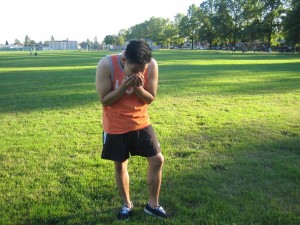Anaphylaxis is a severe allergic reaction which is can be life-threatening. Anaphylaxis is a medical emergency and needs immediate treatment. Anaphylaxis causes difficulty breathing and low blood pressure that causes fainting and dizziness along with the development of reddened raised rash.
In some allergic reactions, the resulting chemicals are released locally on the tissues in one region of the body such as the skin, eyes and other. In anaphylaxis, the chemicals that causes the symptoms such as histamine spread to the bloodstream and causes symptoms usually in only minutes of exposure to the allergen but sometimes up to an hour.
Causes of anaphylaxis
- Eating certain foods such as peanuts, tree nuts or shellfish
- Stings from insects
- Drugs and contrast agents used
- Exercise
- Heat
Wheezing or persistent coughing or severe asthma - Alcohol
- Amount of allergen taken
- How food is prepared and consumed
Symptoms
- Wheezing or persistent coughing or severe asthma
- Vocal changes such hoarse voice
- Swelling of the tongue or throat
- Difficulty in swallowing and speaking
- Noisy breathing
Treatment
- Lay the affected person flat. If there is difficulty breathing, let the person sit. Do not allow the person to walk or stand.
- Loosen tight clothing and cover the affected person with a blanket. Do not provide the person anything to drink.
- If the person vomits or there is bleeding from the mouth, turn the person on his/her side to prevent choking.
- Give the person a shot of an adrenalin autoinjector immediately. Avoid delaying or withholding the administration to prevent deterioration of the condition.
- If the person is not responding and not breathing normally, perform cardiopulmonary resuscitation (CPR) immediately.
Emergency treatment is still needed even if the symptoms begin to improve. There is a possibility that the symptoms can still recur. Unproperly treated anaphylaxis can result to death within 30 minutes.
Tips
- Wear a medical alert bracelet or necklace to indicate an allergy to specific drugs or substances.
- Seek medical help immediately if allergic to drugs or medications.
- Maintain a properly stocked emergency kit that contains prescribed medications. The kit must include an epinephrine autoinjector which usually lasts for 18 months.
- Wear long-sleeved shirts and pants and avoid wearing sandals or walking barefoot in the grass. Avoid wearing bright colored dresses, perfumes and colognes to prevent being stung by insects.
- If allergic to foods, read carefully the labels. When eating out, be aware of the ingredients in dishes ordered.
More Information
The details posted on this page on anaphylaxis is for learning purposes only. To learn to recognize and manage sudden medical emergencies including anaphylaxis, enroll in a first aid course with one of our training providers.
